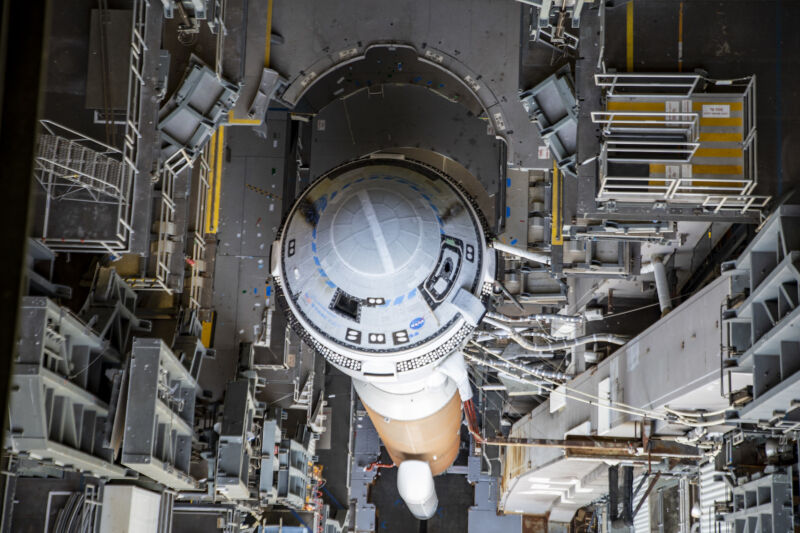
Vous avez déjà rêvé de communiquer par la pensée ? Eh bien, accrochez-vous à vos 2 neurones, car la télépathie pourrait bien devenir réalité plus vite que prévu ! En effet, des chercheurs de l’Institut de Technologie de Californie (Caltech) viennent de franchir une étape cruciale en créant un dispositif capable d’e lire et de traduire d’interpréter la petit voix qu’on a l’intérieur de la tête. Et oui, ils ont réussi à décoder les mots qui se baladent dans votre cerveau !
Alors, comment ça marche ? Et bien les scientifiques ont recruté 2 personnes atteintes de lésions de la moelle épinière et leur ont implanté des électrodes dans le
gyrus supramarginal
(à vos souhaits), une région du cerveau impliquée dans la formation de la parole interne. Pendant 3 jours, les participants ont été entraînés à s’imaginer prononcer une série de six mots (
champ de bataille, cow-boy, python, cuillère, natation et téléphone
) et 2 termes absurdes (
nifzig et bindip
), pendant que leur activité cérébrale était enregistrée.
Ensuite, les données ont été intégrées à un modèle informatique qui a essayé de décoder et d’interpréter les signaux cérébraux des participants lorsqu’ils pensaient à ces mots. Et devinez quoi ? Ça a marché ! Le modèle a réussi à prédire la parole interne du premier sujet avec une précision de
79%
et celle du deuxième avec une précision de
23%
. Bon, ok, ce n’est pas parfait, mais c’est un début prometteur !
 a)
Diagramme de l’algorithme de décodage. Premièrement, l’activité neuronale (franchissements de seuils multi-unités et puissance de la bande de spikes) est segmentée temporellement et lissée sur chaque électrode. Deuxièmement, un RNN convertit une série temporelle de cette activité neuronale en une série temporelle de probabilités pour chaque phonème (plus la probabilité d’un jeton de « silence » entre les mots et d’un jeton « vide » associé à la procédure de formation de classification temporelle connexionniste). Le RNN est une architecture à cinq couches d’unités récurrentes à portes, entraînée avec TensorFlow 2. Enfin, les probabilités des phonèmes sont combinées avec un modèle linguistique à large vocabulaire (un modèle trigramme personnalisé de 125 000 mots implémenté dans Kaldi) pour décoder la phrase la plus probable. Les phonèmes dans ce diagramme sont notés en utilisant l’Alphabet Phonétique International.
a)
Diagramme de l’algorithme de décodage. Premièrement, l’activité neuronale (franchissements de seuils multi-unités et puissance de la bande de spikes) est segmentée temporellement et lissée sur chaque électrode. Deuxièmement, un RNN convertit une série temporelle de cette activité neuronale en une série temporelle de probabilités pour chaque phonème (plus la probabilité d’un jeton de « silence » entre les mots et d’un jeton « vide » associé à la procédure de formation de classification temporelle connexionniste). Le RNN est une architecture à cinq couches d’unités récurrentes à portes, entraînée avec TensorFlow 2. Enfin, les probabilités des phonèmes sont combinées avec un modèle linguistique à large vocabulaire (un modèle trigramme personnalisé de 125 000 mots implémenté dans Kaldi) pour décoder la phrase la plus probable. Les phonèmes dans ce diagramme sont notés en utilisant l’Alphabet Phonétique International.
b)
Les cercles ouverts indiquent les taux d’erreur de mots pour deux modes de parole (vocalisé versus silencieux) et différentes tailles de vocabulaire (50 versus 125 000 mots). Les taux d’erreur de mots ont été agrégés sur 80 essais par jour pour le vocabulaire de 125 000 mots et 50 essais par jour pour le vocabulaire de 50 mots. Les lignes verticales indiquent les intervalles de confiance (IC) à 95 %.
c)
Même chose que dans b, mais pour le taux de parole (mots par minute).
d)
Un essai d’exemple en boucle fermée démontrant la capacité du RNN à décoder des séquences sensées de phonèmes (représentées en notation ARPABET) sans modèle linguistique. Les phonèmes sont décalés verticalement pour lisibilité, et ‘’ indique le jeton de silence (que le RNN a été entraîné à produire à la fin de tous les mots). La séquence de phonèmes a été générée en prenant les phonèmes à probabilité maximale à chaque étape temporelle. Notez que les erreurs de décodage de phonèmes sont souvent corrigées par le modèle linguistique, qui infère toujours le mot correct. Les phonèmes et mots incorrectement décodés sont indiqués en rouge.
Les chercheurs ont ainsi confirmé que le
gyrus supramarginal
joue un rôle clé dans la production de la parole interne. Mais il reste encore beaucoup à découvrir sur le fonctionnement de nos cerveaux dans ce domaine. On est encore loin de pouvoir utiliser cette technologie pour permettre à des personnes privées de communication, comme celles atteintes du
syndrome d’enfermement
, de s’exprimer efficacement. Mais ça ouvre déjà des perspectives médicales et technologiques impressionnantes ! 🚀
Bientôt, on pourra peut-être carrément faire communiquer nos cerveaux à distance grâce à ce genre d’interfaces ! Plus besoin de parler ou d’écrire, il suffira de penser très fort «
Hé mec, tu me passes le sel ?
» pour que votre ami vous envoie la salière par télépathie. Bon, j’exagère un peu, mais avouez que ça serait quand même super cool !
Et ce n’est qu’un début. Les chercheurs planchent déjà sur des améliorations de leur système. Ils espèrent notamment réussir à distinguer les lettres individuelles de l’alphabet. Une sorte de
T9 cérébral
pour écrire des SMS par la pensée, vous imaginez ?
Bien sûr, tout cela soulève aussi des questions éthiques sur la vie privée et le contrôle de nos pensées et aç signe probablement l’arrêt de mort prochain de votre couple ^^. Mais en attendant, on ne peut que s’émerveiller devant ces avancées qui nous rapprochent un peu plus de la science-fiction. Qui sait, peut-être qu’un jour, on n’aura même plus besoin de se parler pour se comprendre ?
Si vous voulez en savoir plus sur cette étude fascinante, je vous invite à consulter l’article original publié dans
Nature Medicine
📖
Allez, maintenant je vais penser à un truc très fort dans ma tête et vous allez devoir le deviner…
**** gniiiiiii ****
Alors ? Bravo, vous avez trouvé !
Source
chevron_right


 a)
Diagramme de l’algorithme de décodage. Premièrement, l’activité neuronale (franchissements de seuils multi-unités et puissance de la bande de spikes) est segmentée temporellement et lissée sur chaque électrode. Deuxièmement, un RNN convertit une série temporelle de cette activité neuronale en une série temporelle de probabilités pour chaque phonème (plus la probabilité d’un jeton de « silence » entre les mots et d’un jeton « vide » associé à la procédure de formation de classification temporelle connexionniste). Le RNN est une architecture à cinq couches d’unités récurrentes à portes, entraînée avec TensorFlow 2. Enfin, les probabilités des phonèmes sont combinées avec un modèle linguistique à large vocabulaire (un modèle trigramme personnalisé de 125 000 mots implémenté dans Kaldi) pour décoder la phrase la plus probable. Les phonèmes dans ce diagramme sont notés en utilisant l’Alphabet Phonétique International.
a)
Diagramme de l’algorithme de décodage. Premièrement, l’activité neuronale (franchissements de seuils multi-unités et puissance de la bande de spikes) est segmentée temporellement et lissée sur chaque électrode. Deuxièmement, un RNN convertit une série temporelle de cette activité neuronale en une série temporelle de probabilités pour chaque phonème (plus la probabilité d’un jeton de « silence » entre les mots et d’un jeton « vide » associé à la procédure de formation de classification temporelle connexionniste). Le RNN est une architecture à cinq couches d’unités récurrentes à portes, entraînée avec TensorFlow 2. Enfin, les probabilités des phonèmes sont combinées avec un modèle linguistique à large vocabulaire (un modèle trigramme personnalisé de 125 000 mots implémenté dans Kaldi) pour décoder la phrase la plus probable. Les phonèmes dans ce diagramme sont notés en utilisant l’Alphabet Phonétique International.







